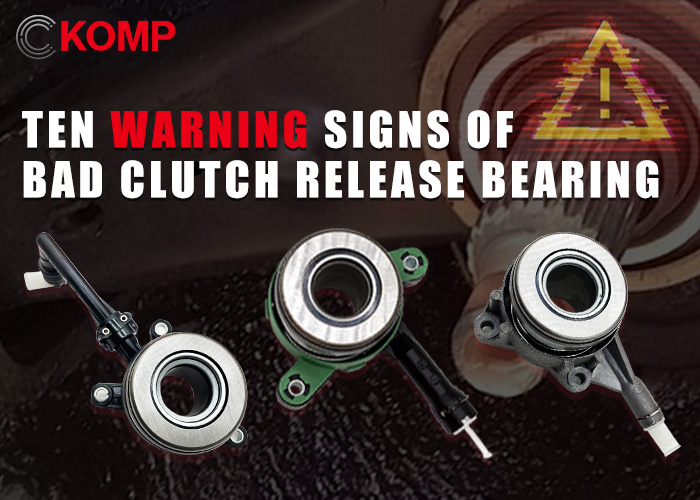Ten Warning Signs of Bad Clutch Release Bearing
Aug 28, 2025
Ten Warning Signs of Bad Clutch Release Bearing
As a critical component of the transmission system, damage to the clutch release bearing can directly impact vehicle handling and safety. Recognizing clutch bearing failure symptoms early can help drivers avoid costly repairs and dangerous breakdowns. The following are typical symptoms, summarized from multiple repair cases:
 Abnormal Operation
1. Increased Clutch Resistance: The pedal becomes heavy, even "sticky," requiring greater force to disengage the clutch.
2. Difficulty Shifting: Gears clash or become locked when engaging a gear, especially at low speeds.
3. Power Transmission Interruption: The engine rpm increases but the vehicle speed does not, resulting in an "idling" state.
Auditory Warning Signs
4. Abnormal Neutral Squeak: A grinding noise occurs at idle, intensifying when the pedal is pressed.
5. Metallic Friction: A sharp, hissing sound, similar to metal scraping, is heard when driving in gear.
6. Clicking/Buzzing: A regular mechanical noise occurs during rapid acceleration.
Systemic Chain Reaction
7. Clutch Overheating: A frequent burning odor may be detected, and the instrument panel may display a high-temperature warning.
8. Abnormally Increased Fuel Consumption: Due to reduced power transmission efficiency, fuel consumption per 100 kilometers may increase by 15%-20%.
Abnormal Operation
1. Increased Clutch Resistance: The pedal becomes heavy, even "sticky," requiring greater force to disengage the clutch.
2. Difficulty Shifting: Gears clash or become locked when engaging a gear, especially at low speeds.
3. Power Transmission Interruption: The engine rpm increases but the vehicle speed does not, resulting in an "idling" state.
Auditory Warning Signs
4. Abnormal Neutral Squeak: A grinding noise occurs at idle, intensifying when the pedal is pressed.
5. Metallic Friction: A sharp, hissing sound, similar to metal scraping, is heard when driving in gear.
6. Clicking/Buzzing: A regular mechanical noise occurs during rapid acceleration.
Systemic Chain Reaction
7. Clutch Overheating: A frequent burning odor may be detected, and the instrument panel may display a high-temperature warning.
8. Abnormally Increased Fuel Consumption: Due to reduced power transmission efficiency, fuel consumption per 100 kilometers may increase by 15%-20%.
9. Increased Vehicle Vibration: Noticeable tremors when starting or at low speeds, similar to intermittent power delivery.
10. Lubricant Leakage: Visible oil stains on the chassis, and grease inside the bearings has melted and leaked due to high temperatures.
Prevention and Treatment Recommendations
Regularly check the clutch free travel (usually 15-25mm). Avoid driving in a partially clutched state for extended periods. Check bearing lubrication during maintenance every 40,000 kilometers.
If three or more of the above clutch bearing failure symptoms occur, it is recommended to replace the release bearing assembly immediately to avoid damage to the pressure plate or flywheel. Working with a trusted clutch release bearing supplier ensures that replacement parts meet quality standards. For long-term reliability, sourcing directly from a professional clutch release bearing factory can provide both cost advantages and consistent product performance.
